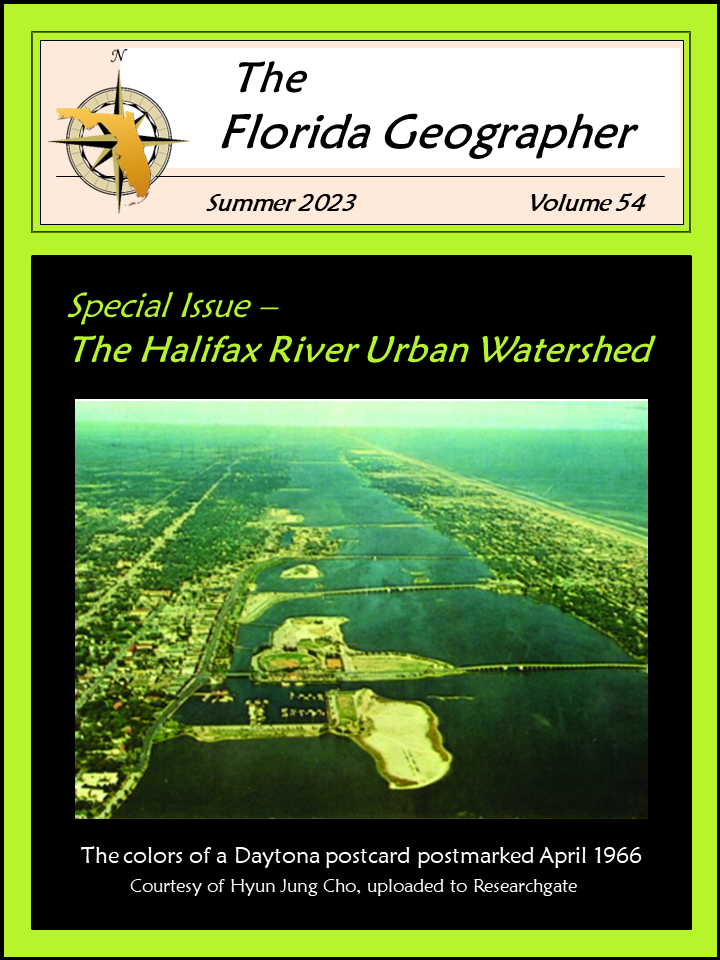PHOTO ESSAY: Plantations, Wars, and the Ruins: Historical Components Shaping the Halifax River Basin
Abstract
The establishment of sugar plantations in the Halifax region of Northeast Florida during the territorial era between 1821 and 1845 was significant both historically and environmentally. Sugar plantations in the Halifax region proved to be a profitable industry, albeit with a heavy reliance on enslaved people to help meet the increased demand for labor. Establishing plantations, however, resulted in significant impacts on the natural environment, including alterations to ecosystems, land-use patterns, topography, vegetation, and water quality. The Second Seminole War (1835-1842) destroyed many of these plantations, impacting the region and shaping the future social, economic, and environmental history of Northeast Florida. This photo essay reviews the visible remains of plantations and the associated past conflicts within the Halifax River region (Eastern parts of Volusia and Flagler Counties) during the early stages of the territorial era in Florida, encompassing the years between 1821 and 1845. The historic sites noted in this paper are available for public access. The photographs are accompanied with a narrative by Zach Zacharies, the Senior Curator of History at the Museum of Arts and Science of Daytona Beach, Florida.

